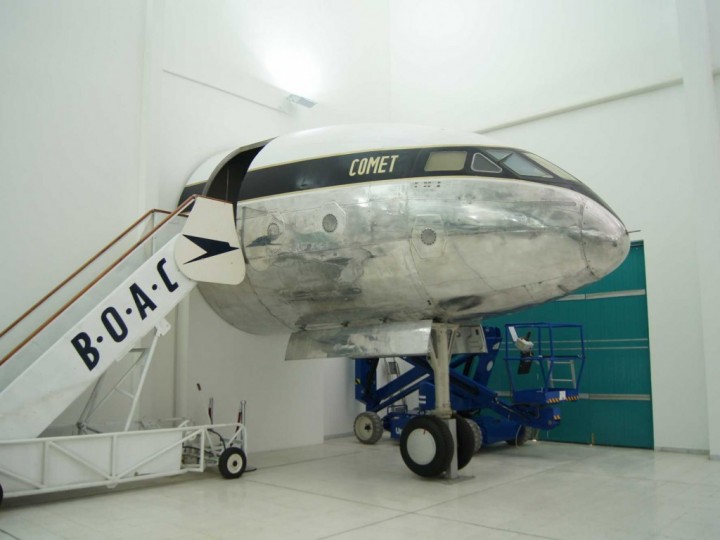1953 De Havilland Comet 2 G AMXA
Comet was the world's first commercial aircraft. Service passenger aircraft began May 2, 1952
Here is a cab from the first commercial aircraft type Comet 2, which used new engines Rolls-Royce Avon.
This aircraft first flew in 1953 in the colors of BOAC, as presented here.
quickest
G-AMXA set a record for speed and range in his first long flight from London, United Kingdom - Khartoum, Sudan in 1954. (3080 miles / 4928 kilometers with an average speed of 481 miles per hour / 769 kilometers per hour)
This Comet was used Air Force between 1958 and 1974, and flew to and from Sharjah to refuel.
en.wikipedia.org
The de Havilland DH 106 Comet was the first production commercial jetliner. Developed and manufactured by de Havilland at its Hatfield, Hertfordshire, United Kingdom headquarters, the Comet 1 prototype first flew on 27 July 1949. It featured an aerodynamically clean design with four de Havilland Ghost turbojet engines buried in the wings, a pressurised fuselage, and large square windows. For the era, it offered a relatively quiet, comfortable passenger cabin and showed signs of being a commercial success at its 1952 debut.
A year after entering commercial service the Comets began suffering problems, with three of them breaking up during mid-flight in well-publicised accidents. This was later found to be due to catastrophic metal fatigue in the airframes, not well understood at the time. The Comet was withdrawn from service and extensively tested to discover the cause; the first incident had been incorrectly blamed on adverse weather. Design flaws, including dangerous stresses at the corners of the square windows and installation methodology, were ultimately identified. As a result, the Comet was extensively redesigned with oval windows, structural reinforcement and other changes. Rival manufacturers meanwhile heeded the lessons learned from the Comet while developing their own aircraft.
Although sales never fully recovered, the improved Comet 2 and the prototype Comet 3 culminated in the redesigned Comet 4 series which debuted in 1958 and had a productive career of over 30 years. The Comet was adapted for a variety of military roles such as VIP, medical and passenger transport, as well as surveillance. The most extensive modification resulted in a specialised maritime patrol aircraft variant, the Hawker Siddeley Nimrod. Nimrod remained in service with the Royal Air Force (RAF) until June 2011, over 60 years after the Comet's first flight.





